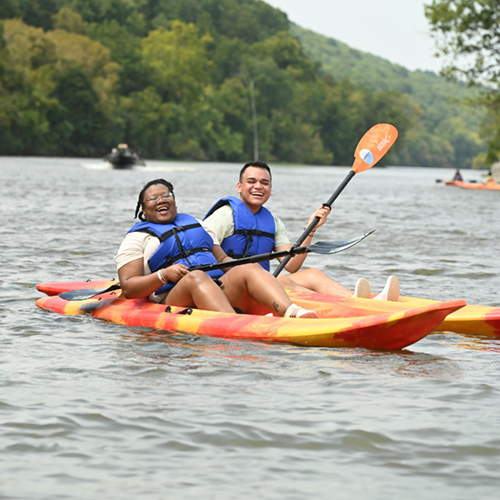
Did you know that an orange with its peel will float, but one without will sink?
This visual demonstration makes an impact while illustrating the importance of water safety and wearing life jackets to prevent drowning, according to Jennifer Barney, Injury Prevention Outreach Coordinator in the Trauma Department at Reading Hospital. She often uses the demonstration at area events to help educate community members about the National Drowning Prevention Alliance’s 5 Layers of Protection.
Drowning deaths are on the rise in the United States, after decades of decline, she said, adding that 83% of those who died by drowning while boating in various bodies of water were not wearing a personal flotation device (PFD).
More than 4,500 people died from drowning between 2020 and 2022, an increase of 500 deaths per year, compared to 2019 as reported by the CDC. Drowning remains the number one cause of death for children ages one to four.
Reading Hospital’s Trauma Department staff share life-saving lessons and encourage people to wear life jackets to prevent downing and aquatic-related injuries – not just in the summer, but year-round.
“When used appropriately, life jackets protect you when you are not expecting to be in the water, especially around open water,” Barney said. “With proper education, awareness, and advocacy, together we can prevent drowning tragedies."
Know the Five Layers of Protection
1. Barriers & Alarms
It's important to use safety precautions such as four-sided isolation fencing with self-closing, self-latching gates, pool safety covers that meet ASTM F1346-23: Standard Performance Specification for Safety Covers and alarm systems to help prevent unsupervised children and unauthorized adults from accessing the water.
2. Supervision
Stay vigilant and aware of your surroundings when children are in or near the water with close, constant, and capable adult supervision from a designated water watcher or lifeguard.
3. Water Competence
Every child and adult should be equipped with the skills to protect themselves in water by learning to swim and enhancing their basic water safety skills to reduce the risk of drowning and aquatic-related injuries.
4. Life Jackets
When used appropriately, life jackets protect you when you are not expecting to be in the water, especially in open water. Ensure your life jackets are sized appropriately for each wearer, and are United States Coast Guard-approved as personal flotation devices (PFD).
5. Emergency Preparation
Knowing how to prepare for an emergency with CPR training, rescue breathing, and basic water rescue skills can make the difference between life and death. Have a phone available and be ready to call 911.
